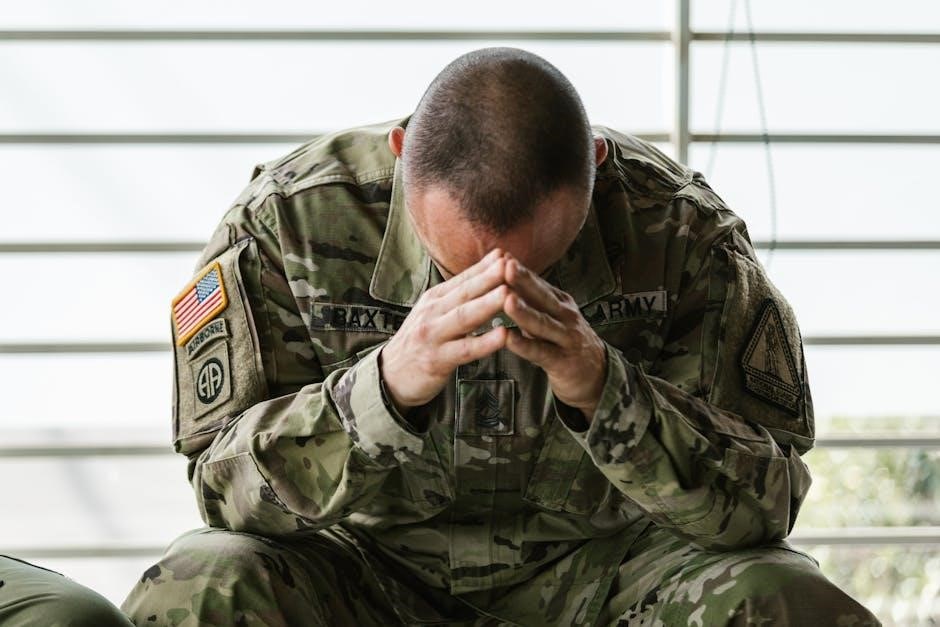
Overview of “The Wednesday Wars”
Gary D. Schmidt’s “The Wednesday Wars,” set during 1967-68, tells the story of Holling Hoodhood, a seventh-grader navigating junior high challenges. It explores themes of friendship, family, and societal issues against the backdrop of the Vietnam War era.
Historical Context: 1967-1968 Setting
The novel “The Wednesday Wars” is deeply rooted in the historical context of 1967 and 1968, a period of significant social and political upheaval in the United States. The Vietnam War serves as a constant backdrop, influencing the characters’ lives and decisions. Events like the Tet Offensive and anti-war protests are subtly woven into the narrative, reflecting the anxieties and divisions within American society. This era was also marked by the Civil Rights Movement, which challenged racial segregation and discrimination, and the growing counterculture movement, which questioned traditional values and norms. Holling Hoodhood’s personal struggles are intertwined with these broader historical events, providing a rich and nuanced portrayal of adolescence during a turbulent time. The setting is not merely a backdrop but an active force shaping the characters’ experiences and beliefs. The author uses historical details to create a sense of authenticity and to explore themes of war, social justice, and the search for identity.

Main Characters
The core of “The Wednesday Wars” revolves around Holling Hoodhood, a seventh-grader, and his complex relationship with his teacher, Mrs. Baker. Other significant characters include Holling’s family and classmates, each playing a vital role.
Holling Hoodhood
Holling Hoodhood, the protagonist of “The Wednesday Wars,” is a seventh-grade student navigating the complexities of adolescence in 1960s Long Island. He finds himself in an unusual situation, spending Wednesday afternoons alone with his teacher, Mrs. Baker, due to the religious education schedules of his classmates. Initially, Holling believes Mrs. Baker dislikes him, but their time together leads to unexpected growth and understanding.
As the story progresses, Holling grapples with personal challenges, including his family dynamics and the societal backdrop of the Vietnam War. Through his experiences with Shakespearean plays and real-world events, Holling undergoes a significant transformation, developing resilience, empathy, and a deeper understanding of himself and the world around him, ultimately shaping his coming-of-age journey.
Mrs. Baker
Mrs. Baker, Holling Hoodhood’s initially perceived antagonist, is a complex and pivotal character in “The Wednesday Wars.” As Holling’s seventh-grade teacher, she is tasked with spending Wednesday afternoons alone with him while the other students attend religious instruction. Initially, Holling believes she harbors animosity towards him, leading to humorous and often challenging interactions.
However, as their time together progresses, Mrs. Baker reveals herself to be a caring and insightful mentor. She introduces Holling to the world of Shakespeare, using the plays to teach him valuable life lessons and help him navigate the challenges of adolescence. Her character evolves throughout the novel, showcasing her strength, resilience, and dedication to her students, particularly Holling, ultimately fostering a deep and meaningful connection.

Plot Summary
“The Wednesday Wars” follows Holling Hoodhood’s seventh-grade year, navigating school, Shakespeare with Mrs. Baker, and the Vietnam War’s impact. He learns about friendship, family, and dealing with prejudice in 1967-68.
Holling’s Wednesday Afternoons
In “The Wednesday Wars,” Holling Hoodhood spends his Wednesday afternoons alone with Mrs. Baker while his classmates attend religious instruction. Initially, he believes Mrs. Baker hates him and is trying to make his life miserable. His father wants him to stay on Mrs. Bakers good side. She assigns him chores like cleaning erasers and reading Shakespeare, which he dreads.
However, these seemingly awful afternoons evolve into something more. Through Shakespeare, Holling discovers new perspectives and learns valuable life lessons. He begins to see Mrs. Baker in a different light, recognizing her intelligence and compassion. Their relationship develops beyond teacher and student, forming a unique bond as they navigate the challenges of 1967-68. The Wednesday afternoons become a time of growth, understanding, and unexpected friendship for Holling.
Shakespearean Plays and Their Impact
Throughout “The Wednesday Wars,” Mrs. Baker introduces Holling Hoodhood to various Shakespearean plays, significantly impacting his personal growth. Initially resistant, Holling finds himself drawn into the language and stories of works like “The Tempest,” “Hamlet,” and “Macbeth.” These plays provide Holling with new perspectives on themes such as love, loss, ambition, and morality, giving him the courage to embrace new challenges.
The characters and situations in Shakespeare’s plays mirror aspects of Holling’s own life, helping him understand his relationships with his family, friends, and Mrs. Baker. The plays inspire him to think critically, express himself more eloquently, and ultimately navigate the complexities of adolescence with newfound wisdom and empathy, making Shakespeare an integral part of his coming-of-age journey.
The Vietnam War Backdrop
The Vietnam War serves as a significant backdrop in “The Wednesday Wars,” shaping the social and emotional landscape of Holling Hoodhood’s life. Set in 1967-1968, the novel reflects the pervasive anxiety and uncertainty that the war brought to American society. Holling experiences the war through news reports, protests, and the absence of his teacher Mrs. Baker’s husband, who is serving in Vietnam.
The war’s presence influences Holling’s understanding of conflict, loss, and the complexities of the world beyond his suburban life. It also highlights the divisions and tensions within his community, as people grapple with differing opinions and the emotional toll of the war. Through Holling’s experiences, the novel explores the impact of the Vietnam War on individual lives and the broader American consciousness, adding depth and context to his coming-of-age story.

Themes
“The Wednesday Wars” explores themes of coming-of-age, friendship, and prejudice. Holling’s journey highlights self-discovery, understanding others, and navigating societal issues during the Vietnam War era, offering insightful commentary.
Coming-of-Age
In “The Wednesday Wars,” Holling Hoodhood’s journey epitomizes the complexities of coming-of-age during a tumultuous period. Set against the backdrop of the Vietnam War and societal changes, Holling grapples with adolescence, family dynamics, and personal identity. His Wednesday afternoons with Mrs. Baker become transformative experiences, exposing him to literature, culture, and life lessons beyond the classroom.
Through Shakespearean plays, Holling confronts universal themes of love, loss, and betrayal, mirroring his own evolving understanding of the world. He navigates friendships, faces prejudice, and learns to question authority, shaping his character and values. As Holling matures, he discovers his voice, embraces empathy, and finds resilience in the face of adversity. “The Wednesday Wars” captures the essence of adolescence, highlighting the challenges and triumphs of self-discovery.
Friendship and Understanding
“The Wednesday Wars” beautifully portrays the development of unexpected friendships and the importance of understanding others. Holling’s initial perception of Mrs. Baker as an adversary gradually transforms into a bond built on mutual respect and shared experiences. Their Wednesday afternoons become a space for intellectual growth and personal connection, fostering empathy and challenging preconceived notions.
Holling’s friendships with Doug Swieteck and Meryl Lee Kowalski also demonstrate the power of understanding and acceptance. Despite their differences, they navigate the complexities of adolescence together, supporting each other through challenges and celebrating triumphs. Through these relationships, Holling learns the value of compassion, forgiveness, and the transformative potential of genuine human connection, enriching his understanding of himself and the world around him. The novel highlights the importance of building bridges across divides.
Dealing with Prejudice
“The Wednesday Wars” subtly addresses the theme of prejudice through Holling’s experiences in a community grappling with social divisions. As the only Presbyterian student not attending religious instruction on Wednesday afternoons, Holling feels isolated and faces assumptions based on his religious background. This situation exposes him to the subtle forms of prejudice that exist within his school and community.
Furthermore, the backdrop of the Vietnam War introduces another layer of prejudice, as societal tensions and anxieties impact Holling’s understanding of the world. The novel encourages readers to examine their own biases and consider the impact of prejudice on individuals and communities. By exploring Holling’s journey, the story promotes empathy and understanding as tools to combat prejudice and foster a more inclusive society, emphasizing the importance of questioning societal norms and challenging discriminatory attitudes.

Literary Analysis
“The Wednesday Wars” employs a witty narrative style to explore complex themes. Symbolism enriches the story, providing deeper insights into Holling’s growth. The novel uses historical context to enhance its literary merit.
Narrative Style and Tone
Gary D. Schmidt employs a distinctive narrative style in “The Wednesday Wars,” characterized by Holling Hoodhood’s first-person perspective. This allows readers to intimately experience Holling’s thoughts, feelings, and evolving understanding of the world around him during a tumultuous year. The tone of the novel is a blend of wit, sarcasm, and genuine emotion, reflecting Holling’s personality and the challenges he faces. Schmidt skillfully balances humor with poignant moments, creating a narrative that is both engaging and thought-provoking. The author’s writing is accessible to young readers, while also containing deeper layers of meaning that resonate with adults. Through vivid descriptions and authentic dialogue, Schmidt captures the essence of the 1960s and the complexities of adolescence. The narrative’s pacing keeps the reader invested in Holling’s journey, ensuring a compelling and memorable reading experience, filled with humor and life lessons.
Symbolism in the Novel
“The Wednesday Wars” is rich with symbolism, adding depth and complexity to the narrative. Shakespearean plays, which Holling studies with Mrs. Baker, serve as a central symbolic element, mirroring Holling’s own life and growth. Characters and plot points from plays like “The Tempest” and “Hamlet” resonate with Holling’s experiences, providing him with insights into his relationships and the challenges he faces. The Vietnam War, a constant backdrop to the story, symbolizes the larger societal conflicts and uncertainties that Holling must navigate. The Perfect House, Holling’s family home, represents the pressure to conform and maintain appearances in a rapidly changing world. Cream puffs, initially associated with humiliation, become a symbol of friendship and redemption. These symbols, woven throughout the narrative, enhance the novel’s themes of coming-of-age, understanding, and the search for identity during a pivotal time in history, making the story a thought-provoking read.
Educational Resources
Explore “The Wednesday Wars” with study guides, chapter summaries, and discussion questions. These resources offer character analysis, theme exploration, and activities that enhance student engagement and understanding of Gary D. Schmidt’s novel.
Study Guides and Chapter Summaries
Dive deeper into Gary D. Schmidt’s “The Wednesday Wars” with comprehensive study guides and chapter summaries. These resources provide a structured approach to understanding the novel’s plot, characters, and themes. Each chapter summary offers a concise overview of key events, allowing readers to easily follow Holling Hoodhood’s journey through the tumultuous year of 1967-1968; Study guides offer character insights, analysis of literary devices, and exploration of the historical context, enhancing comprehension and facilitating critical thinking. These tools are invaluable for students, educators, and book club members seeking to fully appreciate the richness and complexity of “The Wednesday Wars.” They also serve as excellent aids for essay writing and test preparation.
Discussion Questions and Activities
Engage with “The Wednesday Wars” on a deeper level through thought-provoking discussion questions and interactive activities. These resources stimulate critical thinking and encourage exploration of the novel’s central themes, such as coming-of-age, friendship, prejudice, and the impact of historical events. Discussion questions prompt readers to analyze character motivations, interpret symbolism, and connect the story to contemporary issues. Activities like creative writing prompts, role-playing exercises, and research projects offer opportunities for hands-on learning and personal reflection. These resources are ideal for classroom use, book clubs, or individual study, fostering a greater appreciation for Gary D. Schmidt’s powerful and poignant novel set against the backdrop of the Vietnam War era.